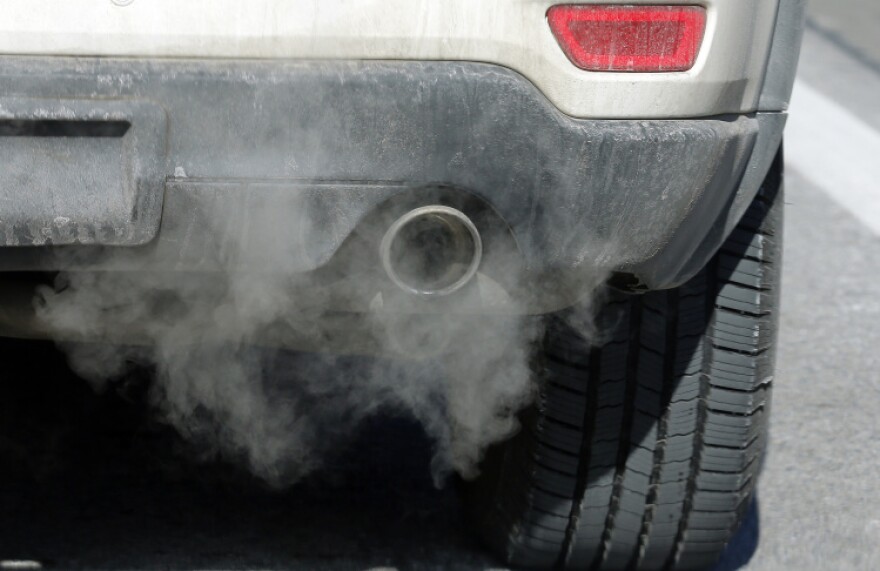With our free press under threat and federal funding for public media gone, your support matters more than ever. Help keep the LAist newsroom strong, become a monthly member or increase your support today.
Hot Weather Means Unhealthy Air, Even With Shutdown

Our news is free on LAist. To make sure you get our coverage: Sign up for our daily coronavirus newsletter. To support our non-profit public service journalism: Donate Now.
Earlier this month we celebrated Southern California's great air quality -- with many caveats -- but now, according to the South Coast Air Quality Management District, it's "Very Unhealthy" in some spots, even though we still have widespread shutdowns.
As you can see, as of midafternoon on April 29, people living in Rancho Cucamonga experienced "Very Unhealthy" (purple) air, whereas people in Santa Clarita and Corona had "Unhealthy" (red) air, followed by air that was "Unhealthy for Sensitive Groups" (orange) in San Bernardino and Ontario.
Much of Los Angeles and Santa Monica was "Moderate" (yellow), while those in Long Beach seem blessed with the best air, at the moment.

One of the biggest factors that's changed between last month and now is the weather, a reliable determiner of bad air in L.A.
"When we have these warm heat spells in April or May, it's not unusual to see some higher ozone levels," said Philip Fine, deputy executive officer at South Coast AQMD for the Planning and Rules Division.
DON'T MISS ANY L.A. CORONAVIRUS NEWS
Get our daily newsletters for the latest on COVID-19 and other top local headlines.
Terms of Use and Privacy Policy
As it heats up we're starting to get a clearer picture of our pollution problem.
That's because the heat bakes emissions from planes, ships, construction sites, and cars that are all still operating, and turns them into smog. That's why air quality tends to be worse during the hottest parts of the day.
It's too early to tell exactly how widespread of an impact the shutdown is having on all sources of emissions (there are many). Fine estimates that there's been a downtick of roughly 20% to 30% of traffic across the region.
It's an interesting real-life emissions experiment that seems to make clear, if we want consistently clean air, that we're going to need to go much further than a few electric cars and trucks on the road.
"We'll be studying this probably for years to come," said Fine.
Air quality should improve if emissions fall or we have a windy day that clears everything out.








